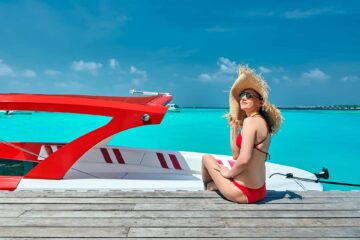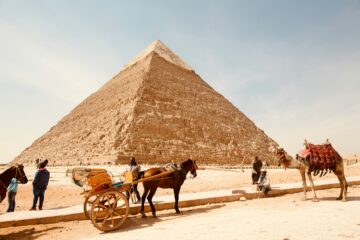Stanley Park in Vancouver – It’s beautiful. It is the skeleton of our metropolis. We provide five facts about Stanley Park that you may not be aware of.
The resort is always forested, just as it was in the late 1800s – the amusement park normally contains approximately half of the 1,000,000 trees, a few of which are 76 metres tall and many years old. Three big hurricanes struck the United States one hundred years ago, causing extensive damage and the loss of many trees.
The Vancouver Seawall draws a huge number of locals and visitors on a regular basis. The recreation area emphasises the rich timberland paths that lead to the beach, Vancouver Aquarium, and numerous other attractions.

With so much history, Stanley Park in Vancouver is brimming with fascinating things you may not have known. Here are five crucial points to remember:
Have you ever seen the Horn Tree in Stanley Park? This 700- to 800-year-old Western Red Cedar tree stump has a beautifully distinctive position in the memory of many Vancouverites and is one of the amusement park’s most remarkable monuments and images. Many amazing photos show people, cars, and elephants stuck inside a massive depression in a tree.
The tree is being created to help clean up the area after the 2006 hurricane, and in any event, locals are working on a plan to measure the tree. The Empty Tree enters a new chapter in its long history at Stanley Park.

The Stanley family grew so dominant in ice hockey that his two sons, Arthur and Algernon, founded a new organisation called the ‘Ottawa Rideau Hall.’ Arthur was also instrumental in the formation of the Ontario Hockey Association (OHA) and later became the organiser of ice hockey in the United Kingdom.
Arthur and Algernon persuaded their father to give them an award that would clearly indicate the topic of hockey. The name Stanley Cup was not charged until 1892, therefore the resort is small, but it also contains a pre-existing charge of the name.
With so many beautiful trees moving by, it’s difficult to believe that Stanley Park was once a logging region. The site was written between 1860 and 1880 before it became a leisure centre. Brockton Point, at the summit of Stanley Park, was supposed to be the site of a sawmill. The land was cleared for sawmills, but it was never built. All else being equal, you will examine Brockton Point Lighthouse today. Many people are unaware that the roads that run through Stanley Park were formerly the first slide-cut roadways in the world.
A view of the water between a wooded park and big metropolitan structures.
Every evening at 9 p.m., the sound of gunfire may be heard booming in the air; this is the Stanley Park 9 p.m. weapon at the horns. The gun was first introduced in England in 1816 and was later transferred to Canada for use in Stanley Park north 70 years later.

The system was established in June 1894 with the help of the Department of Marine and Fisheries to warn fishermen at 18:00 on the last day of fishing. The weapon was originally issued on the afternoon of October 15, 1898, in Stanley Park.
The 21:00 intermission was afterwards altered as a signal for everyone’s time and to allow the harbour ports’ chronometers to be precisely set. William D. Jones, the warden of the Brockton Lighthouse, initially detonated an explosive device until the cannon was unloaded.
A view of the city of Vancouver from a swaying lake surrounded by wildflowers.
Architect Thomas Mawson, who organised the Brockton Point Lighthouse, was also in charge of the Lost Lagoon and the boulevard. The lake was finished in 1916 after three years of construction.
A Lost Lagoon-focused site was developed 30 years after the fact to honour the city’s celebration. The fountain was purchased in Chicago as a byproduct of the city’s 1934 international exhibition.
Lost Lagoon enhances the resort’s attractiveness and natural diversity. The sea-lined lake provides a safe sanctuary for many species of birds as it flows through the bio of the boulevard running bio with the continuance of catching ponds. The water lake is also renowned as the largest watercourse in the recreational area, however, this was not always the case. The truth is that the ocean is a real lake.
There was formerly a mudflow associated with the Burrard Inlet that flowed through Coal Harbor and was rich in shells and other marine critters suitable for harvest.
Although not the largest of its kind, Stanley Park is roughly one-fifth the size of Central Park in New York and half the size of Richmond Park in London. With such a rich past, there is always something new to discover. Hello there, Seawall!


